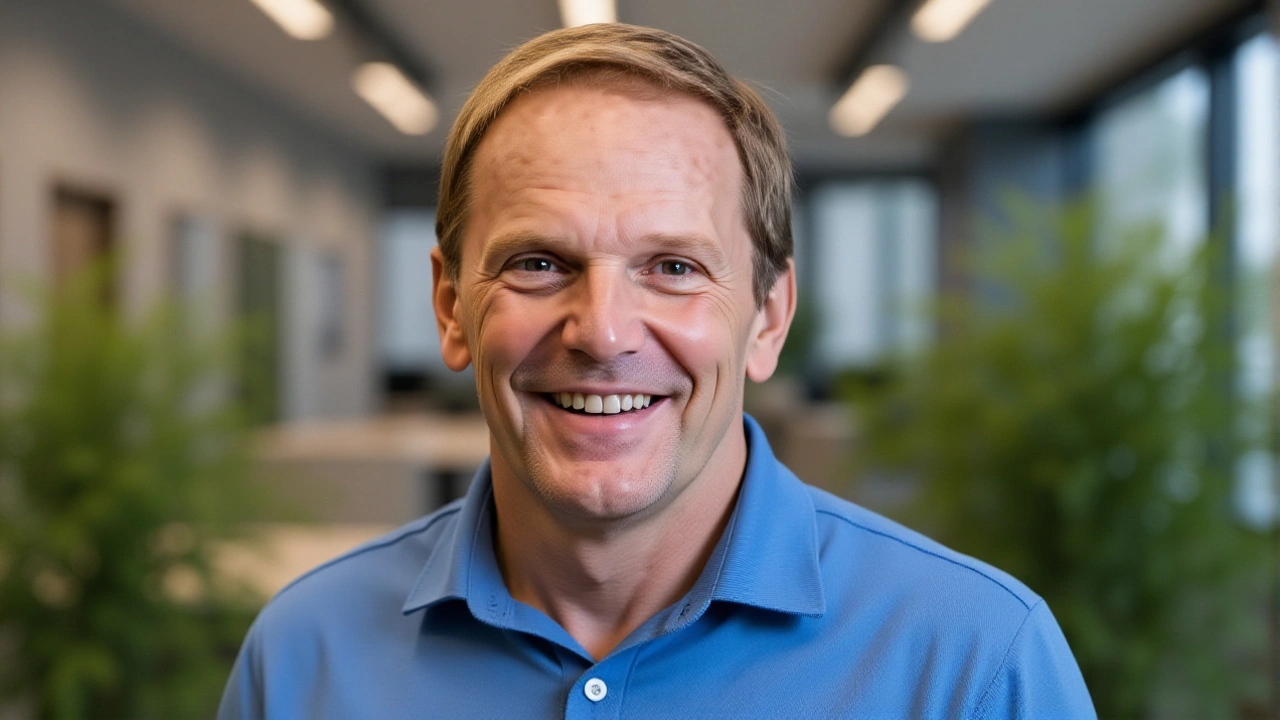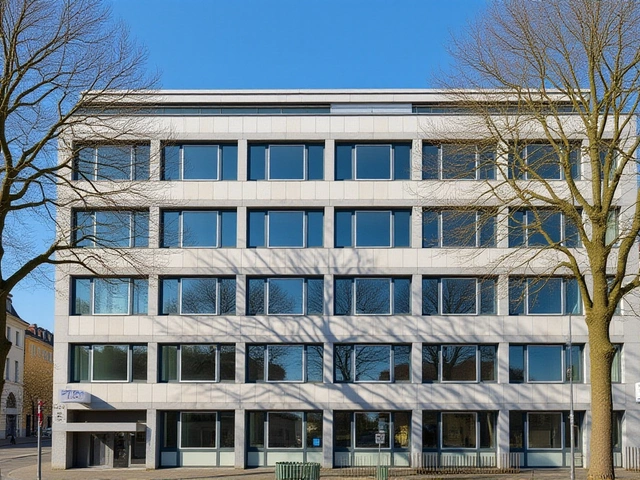On October 23 2024, Bayer AG announced that Mike Graham, global Plant Breeding lead will take over as head of research and development for its Crop Science division, effective April 15 2025. He will succeed Robert Reiter, former Head of R&D, Crop Science, the 62‑year‑old German scientist who is retiring after 27 years at the company. The transition was unveiled from Bayer’s headquarters in Leverkusen, Germany, and Graham will continue to operate out of St. Louis, Missouri, where the North‑American hub of the Crop Science business sits.
Background: Bayer’s Crop Science R&D Landscape
Bayer’s Crop Science division, the world’s second‑largest seed and trait business, posted €11.3 billion in sales in fiscal year 2023 – about 38.7 % of the group’s total €29.2 billion revenue. Behind those numbers sits an R&D engine of roughly 4,850 scientists spread across 15 research centers, with a €2.1 billion spend that fuels everything from herbicide pipelines to next‑gen corn hybrids. The division’s R&D budget has been on a steady incline since the 2018 acquisition of Monsanto, a move that added more than 7,000 patents to Bayer’s portfolio.
- Effective date of leadership change: April 15 2025
- FY 2023 Crop Science sales: €11.3 billion
- Annual R&D spend (FY 2023): €2.1 billion
- Scientists employed in Crop Science R&D: 4,850
- Strategic focus: digital transformation
What makes this reshuffle noteworthy isn’t just the personnel change; it signals Bayer’s intent to push the digital frontier harder than ever before. The company has already invested in AI‑driven phenotyping platforms and cloud‑based data lakes that promise to shave weeks off breeding cycles.
Mike Graham’s Rise from St. Louis to Global Lead
Graham joined Bayer in 1996, fresh out of a plant‑breeding PhD program in the Midwest. He cut his teeth on wheat trials in Kansas before moving to Brazil in 2002 to spearhead tropical corn projects. By 2010 he was back in Europe, leading a cross‑continental team that built Bayer’s first genotyping‑by‑sequencing platform, a tool that later accelerated trait development cycles by roughly 40 %.
Since March 2020, he has overseen the global Plant Breeding organization, steering a portfolio that now includes the Preceon Smart Corn System and the new herbicide Icafolin. Colleagues praise his knack for melding field‑level insight with data‑science. "Mike’s ability to turn raw sensor data into actionable breeding decisions is a game‑changer," said Santha Ramakrishnan, Vice President and Head of R&D Data Strategy and Governance at Bayer Pharmaceuticals. "He’s not just pushing technology; he’s reshaping how we think about crop improvement."
Graham’s digital credentials aren’t just buzzwords. Under his watch, the Plant Breeding unit launched a cloud‑based breeding dashboard that lets scientists in St. Louis, São Paulo and Beijing compare gene‑expression profiles in real time. That initiative reportedly cut the time to market for two new hybrids by six months.
Robert Reiter’s Legacy and the Hand‑over Plan
Reiter started at Bayer as a senior scientist in plant breeding in 1998. He climbed the ladder to head global supply chain (2015‑2018) before taking the reins of R&D in January 2018. During his tenure, Bayer rolled out the Icafolin herbicide – a product that captured roughly €750 million in sales its first year – and the Preceon Smart Corn System, which is being hailed as a potential "revolution" for corn growers in the Midwest.
In a statement released from Leverkusen, Reiter said, "After 27 years with Bayer and 34 years in the agricultural industry, I believe this is the right time to pass the baton to the next generation of leadership. I'm proud of what we've accomplished together in developing innovative solutions for farmers around the world."
His retirement isn’t abrupt; a three‑month hand‑over kicks off on January 15 2025, giving Graham a runway to absorb ongoing projects, including the final regulatory filing for a new drought‑tolerant soybean line slated for 2027.
Why digital transformation Is the New Growth Engine
Across Bayer’s divisions, digitalisation is being framed as a "people‑first" agenda. CFO Guru Ramamurthy recently told analysts, "Finance should not be seen as an anchor, but as a growth accelerator. Because of the way technology is evolving, digital transformation is as much about people as it is about the technology itself."
The push is concrete: Bayer’s new data‑governance framework, rolled out in 2023, now governs more than 2 petabytes of agronomic data. Machine‑learning models trained on that pool have already identified three novel gene targets for disease resistance, shortening the discovery timeline from the traditional 12‑month cycle to under eight months.
For farmers, the payoff could be tangible. Early‑adopter trials of the Preceon Smart Corn System showed a 7 % yield lift under drought stress, translating to an estimated €12 million increase in revenue per 10,000‑acre farm in the U.S. Midwest.

Market Impact and What It Means for Farmers
Analysts at Bloomberg Intelligence lifted Bayer’s FY 2024 R&D outlook by 3 % after the announcement, citing Graham’s proven record in accelerating pipelines. The share price nudged up 1.2 % in after‑hours trading on Oct 23, reflecting investor confidence that the leadership change will keep the division’s pipeline robust.
Beyond the balance sheet, the transition underscores a broader industry shift: seed and trait companies are betting heavily on data‑driven breeding to meet climate‑change challenges. With a new head who lives and breathes that philosophy, Bayer is positioning itself to stay ahead of rivals like Corteva and Syngenta, both of which have unveiled AI‑focused initiatives in the past year.
Looking ahead, Graham has hinted at a "next‑generation" breeding platform that will integrate satellite‑derived weather data with genomic predictors, aiming to deliver region‑specific seed recommendations by 2026. If successful, that could redefine how extension services advise growers, moving from a one‑size‑fits‑all catalogue to a tailor‑made playbook for each field.
Looking Forward: The Next Chapter for Bayer’s R&D
The upcoming months will be a test of continuity. While Reiter’s departure marks the end of an era, his pledge to stay on‑board during the hand‑over signals stability for the 4,850‑strong R&D workforce. Meanwhile, the search for Graham’s successor as Plant Breeding lead is already underway, with internal candidates from the United States, Germany and Brazil under consideration.
In a sector where product cycles span decades, today’s leadership shuffle may feel like a small ripple. Yet for the 86,000 employees spread across 79 countries, and for the millions of farmers who rely on Bayer’s seeds each season, the ripple could turn into a wave of innovation that reshapes agriculture in the second half of the decade.
Frequently Asked Questions
How will the leadership change affect Bayer’s seed development timeline?
Graham’s track record of cutting breeding cycles by up to 40 % suggests the pipeline could accelerate, especially for traits that rely on high‑throughput genotyping. Analysts expect at least two new hybrids to reach market readiness a year earlier than originally projected.
What does the shift toward digital transformation mean for farmers?
Farmers will gain access to more precise seed recommendations that factor in local weather patterns and soil data. Early trials of the Preceon Smart Corn System already demonstrate a 7 % yield boost under drought, indicating tangible financial benefits.
When will the new Plant Breeding lead be announced?
Bayer has said the appointment will be made later in 2025, after an internal review of candidates from the U.S., Germany and Brazil. The timeline aligns with Graham’s own transition, set to finish in April.
How significant is the €2.1 billion R&D spend for Crop Science?
That budget represents roughly 19 % of Bayer’s total R&D outlay in FY 2023, underscoring the division’s strategic importance. It funds everything from field trials to AI model development, fueling both new chemistries and next‑gen seed traits.
What are the broader industry implications of Bayer’s digital push?
Competitors like Corteva and Syngenta are also betting on data‑centric breeding. Bayer’s move could accelerate an industry‑wide shift toward AI‑driven crop design, potentially raising the overall rate of agricultural innovation worldwide.





